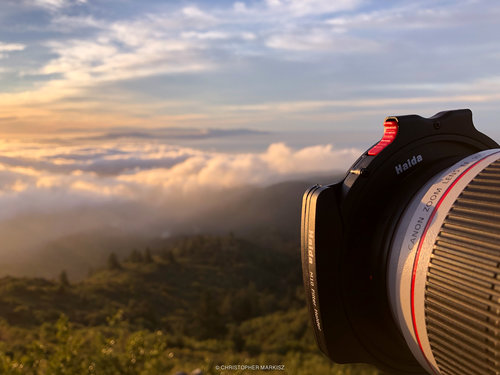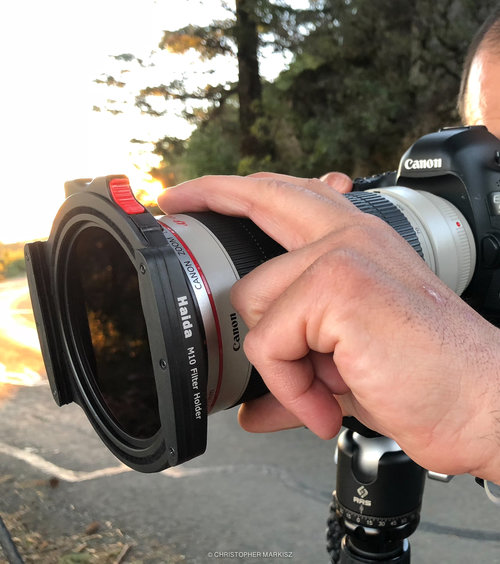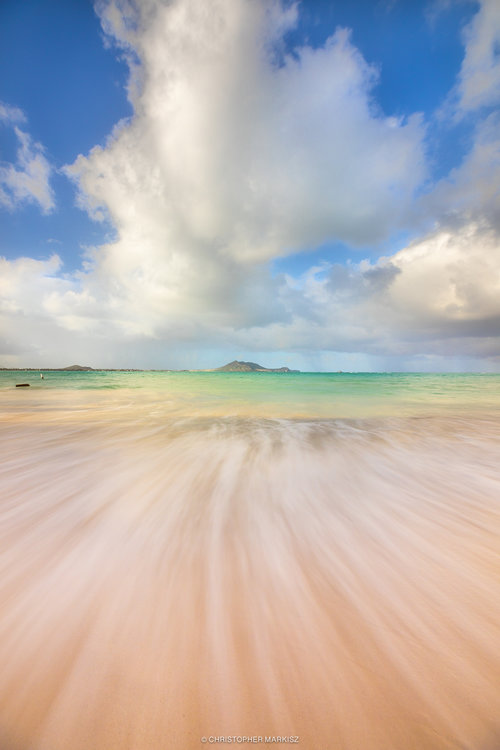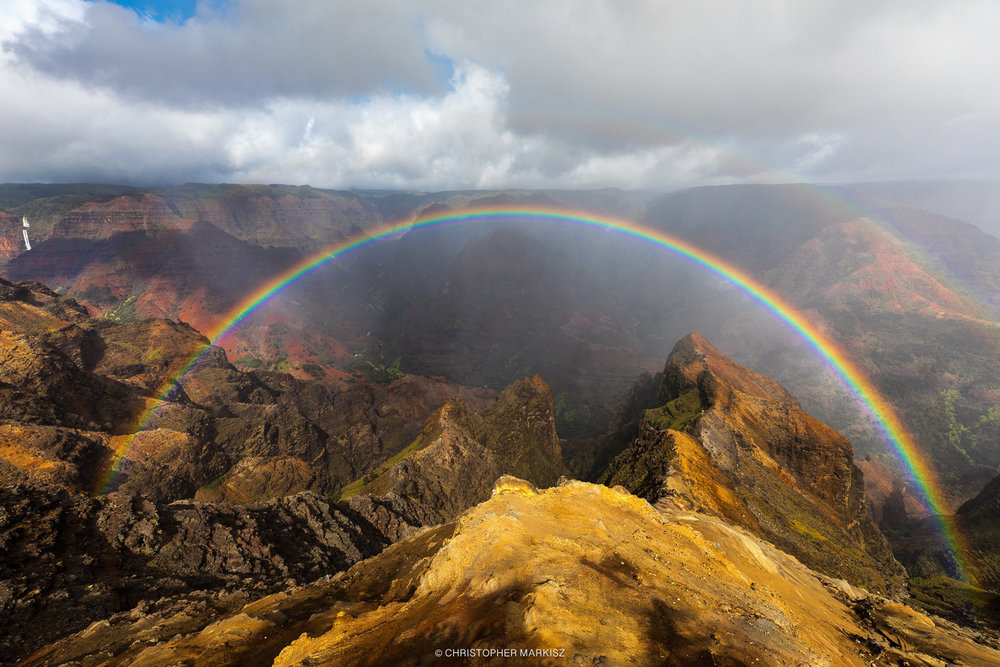Review: Haida M10 Filter Holder System
Author: Chrisropher Markisz Photography

Haida's M10 system on a telephoto lens.
Haida Filters recently sent me their new M10 Filter Holder System — released in January, 2019 — for a field-test analysis. Since receiving it, I've had a number of opportunities to use the M10 in varying conditions. After testing their previous filter holder system, the 100-Pro, I'm pleased to see that some of my criticisms were taken into high consideration and greatly improved upon in the M10.
The M10 system includes the filter holder itself, a CPL (circular polarizer filter), and a “light sealing ring,” which I'll discuss below. It attaches to your lens with an adapter ring, available in sizes ranging from 52mm-82mm (each system comes with one — your choice of size). It arrives in a protective shell case, the inside of which is lined with a soft velvet material, molded to fit the entire system perfectly. There's a small pocket for your adapter ring(s)/CPL/light sealing ring. The case has a carabiner attached — a nice touch for accessibility in the field. While this case serves its purpose well, some extra room for an additional filter or two should be considered for future designs.

Made with Haida's M10 system + 10-stop ND drop-in filter
To setup the M10, twist the appropriate size adapter ring onto your lens thread. Then simply open the filter holder lever, affix it to the ring and close it once securely attached. This process takes seconds and is the greatest improvement from their last system, which required the user to screw on the filter holder to the filter ring. I'm impressed, since my main criticism of the M10's predecessor was the inability to setup as quickly as I'd like. This clip-on mechanism allows for genuinely quick and easy attachment — crucial when conditions are changing dramatically and there's no time to spare. The locking mechanism is indeed sturdy and trustworthy — although I've noticed that some of their adapter rings do feel rather tight upon one's first twist while screwing onto a lens thread, creating the false assumption that it is securely affixed when it is not. The M10 is almost entirely made of lightweight “aviation grade aluminum.”

Haida's M10 with a drop-in ND filter inserted
Once you've attached the M10 to your camera lens, you're ready to insert your choice of filter(s). This system is designed for use with 100mm x 100mm or 100mm x 150mm filters (standard 2mm thick). There’s slots for two of these filters but included is a hardware expansion for those who need the ability to stack up to three. New to this design is a separate drop-in filter slot that most landscape photographers will consider a dedicated CPL holder. This component rotates independently from the rest of the setup, allowing for variable polarization, without simultaneously spinning your other filters. This convenient drop-in feature sits closer to the lens and is meant to be used in tandem with one or more 100mm filters. A variety of other drop-in filters are available besides Haida's CPL and can be easily dropped in and out by pinching their red plastic release buttons. I've used the drop-in 10-stop ND and performed A/B tests with a 100mm square NanoPro 10-stop ND; the results were identical with no noticeable difference in image integrity whatsoever. The CPL also yields sharp and overall excellent images. Admittedly, I'm not an everyday CPL user, yet I find myself using them more often with the M10, clearly the result of an intuitive design.

Made with Haida's M10 system + NanoPro 6-stop ND.
If you choose, for whatever reason, not to use a drop-in CPL/ND, but still wish to use a 100mm filter — you must use Haida's “light sealing ring” instead (included in the kit), which is essentially a skeletal drop-in filter, without an actual filter there. This is an interesting component of the system — while it blocks light very effectively, and the drop-in slot is a great feature overall — at times it feels like yet another moving part to a somewhat intricate system. I'd like to see Haida's next generation include a drop-in slot that maintains the light seal after removal of your drop-in filters. This would alleviate the extra moving part (the light sealing ring drop-in). Also, the redundancy of potentially needing both square and drop-in NDs (depending on whether or not you're using a CPL/other drop-ins) is not ideal, since you can only use one drop in at a time. I'd simply prefer not to carry two different items that effectively have the same purpose.
Haida's filters themselves are impressive. I've shot with a number of their NanoPro NDs, and their CPL/ND drop-in filters. They produce a very slightly warm cast that's easily correctable in post-processing. There’s no noticeable difference in image quality compared to any top industry competitors. I'll note again that their drop in ND filters (those which come with the M10 system) appear to be of equal optical quality as their NanoPro ND line, despite their lightweight feel. (I have not tested their Red Diamond line yet.) When water droplets or other unwanted elements become as issue, both the NanoPro and drop-in filters clean remarkably easily compared to other filters I've used from other companies. The efficiency of a quick cleaning saves a lot of time during wet situations. As for vignetting: there is none, down to 16mm (the widest I've tested). For those who shoot wider than 16mm, you'll have to purchase the M10's big brother, the M15 — made for use with ultra-wide lenses, such as the 14mm-24mm.
Overall, the M10 is an impressive ergonomic success. Landscape photographers have yet another highly-recommended option to consider in an already competitive market. This is a tool for not only professionals, but beginners too. Its simple and sturdy design will leave any photographer satisfied, and more importantly, confident in their setup. I look forward to continued innovation and improvement at Haida Filters.

Made with Haida’s M10 system + drop-in CPL.
Related News
